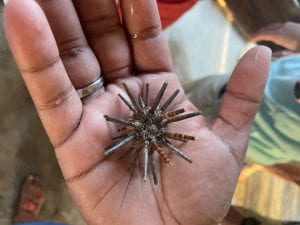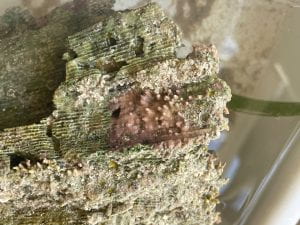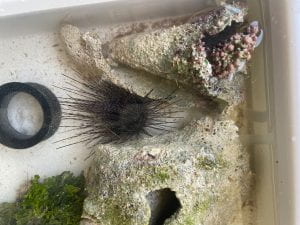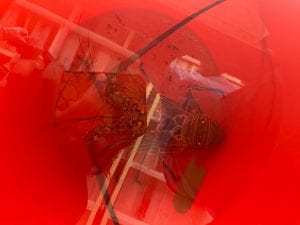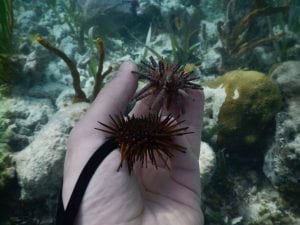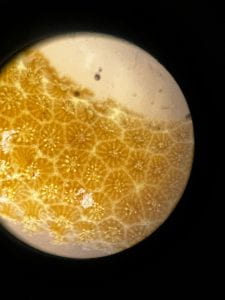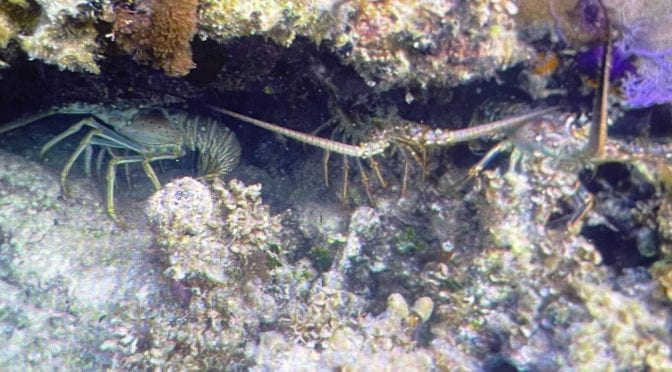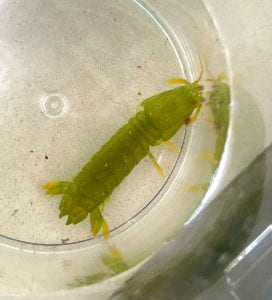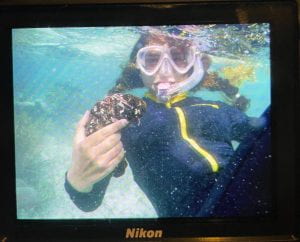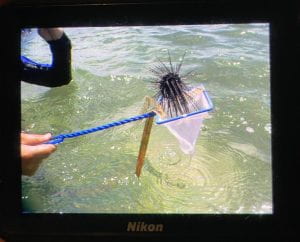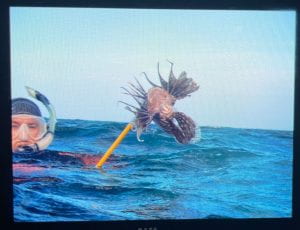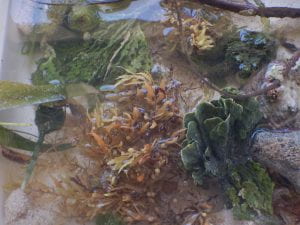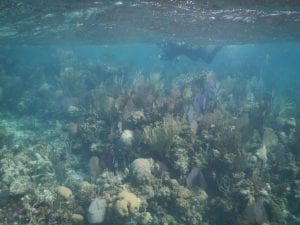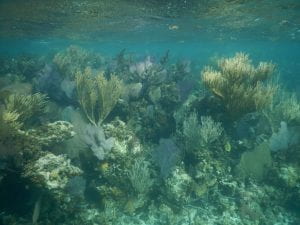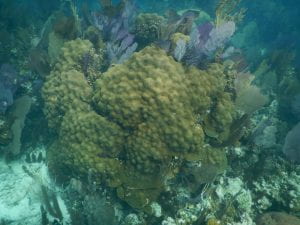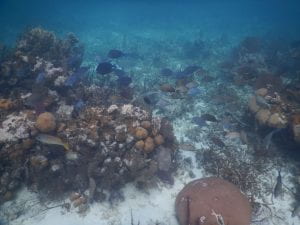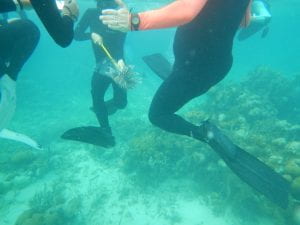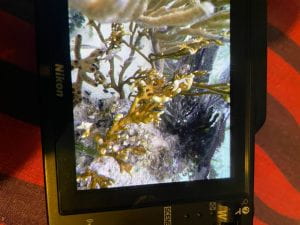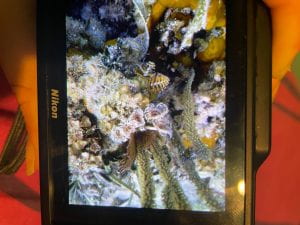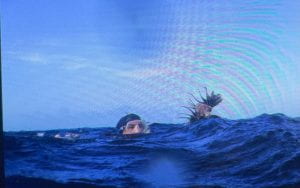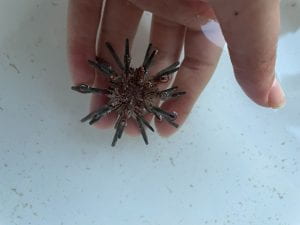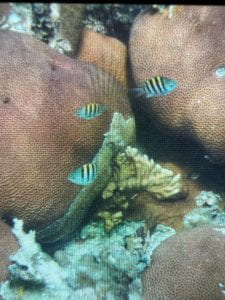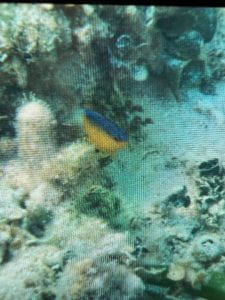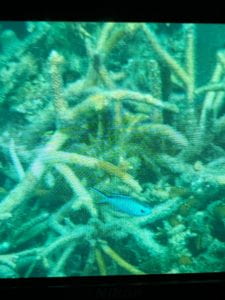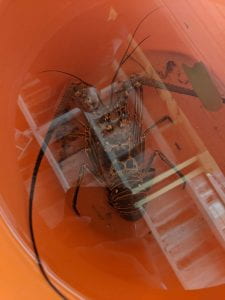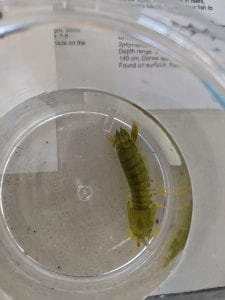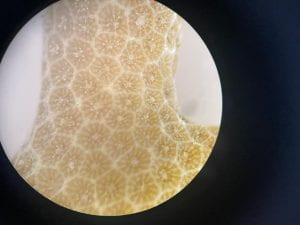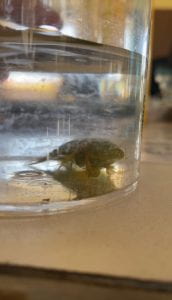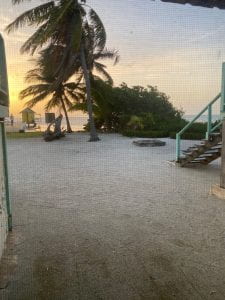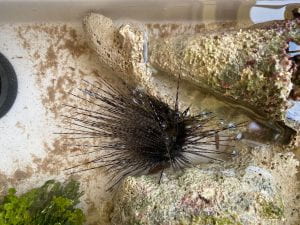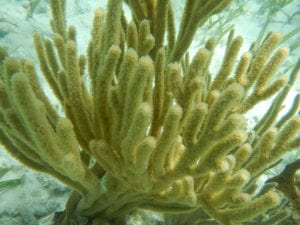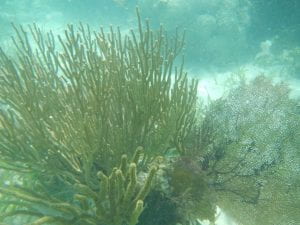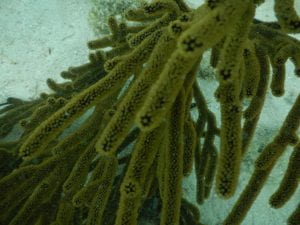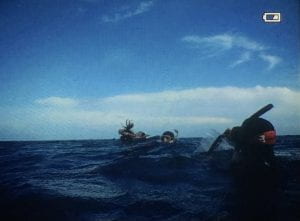Starting a new experiment today, the group came up with the research question “What is the correlation between the percentage of live coral and the sea urchin prevalence? How does this change in a protected versus unprotected zone?” We will be collecting data for this experiment over the next couple days, starting with today. After coming up with the experiment layout, we had some extra time before lunch so we went to the shallower sea grass area on the North side of the island to try to collect as many organisms as we could find into buckets. We were able to find conch, mantis shrimp, a lobster, a Diadima antillarum (a venomous urchin), corallomorphs, anemone, and even some Crustose Corralline red algae! One cool fact that I learned today is that spiny lobsters don’t have claws, unlike the ones that we see in the US. It was like our own little aquarium (which releases the animals back into the ocean of course).
After lunch, we went out on the boat to begin collecting our data. We first went to a patch we went to wasn’t a Marine Protected Area and was pretty shallow. Here, there was a lot of coral rubble and diseased coral, and it was pretty difficult to keep still with the current. To estimate the number of sea urchins in the area, we were all given 10 minutes to collect as many as we could. I was able to find a couple, but they were both underneath rocks that I couldn’t break. We ended up finding 20 different urchins! Also Dr. Correa picked up some Galaxuara spp. (a red algae) that was actually all over the sea floor. We then moved onto a MPA and got to snorkel around, just to explore. There was a huge difference in the landscape (obviously there were topography factors involved in the difference but still) with an abundance of health coral, super diverse grouping of fish and coral, and it was absolutely stunning. Here, I was even able to identify Jania spp. (a red algae) which was actually everywhere throughout the reef. I also was able to identify Fire Coral, Sergeant Fish, Dusky Damsel Fish, French Angel Fish (maybe one of my favorites now), White Scroll Algae, Boulder Star Coral, and Whitestar Sheet Coral. AND Dr. Solomon was able to spear a Lion Fish so we will be making that into some delicious Lion Fish ceviche tomorrow or so!!
– Sophia
